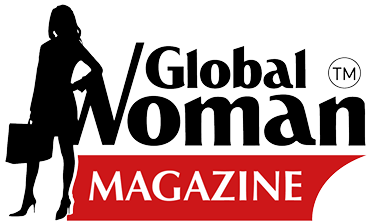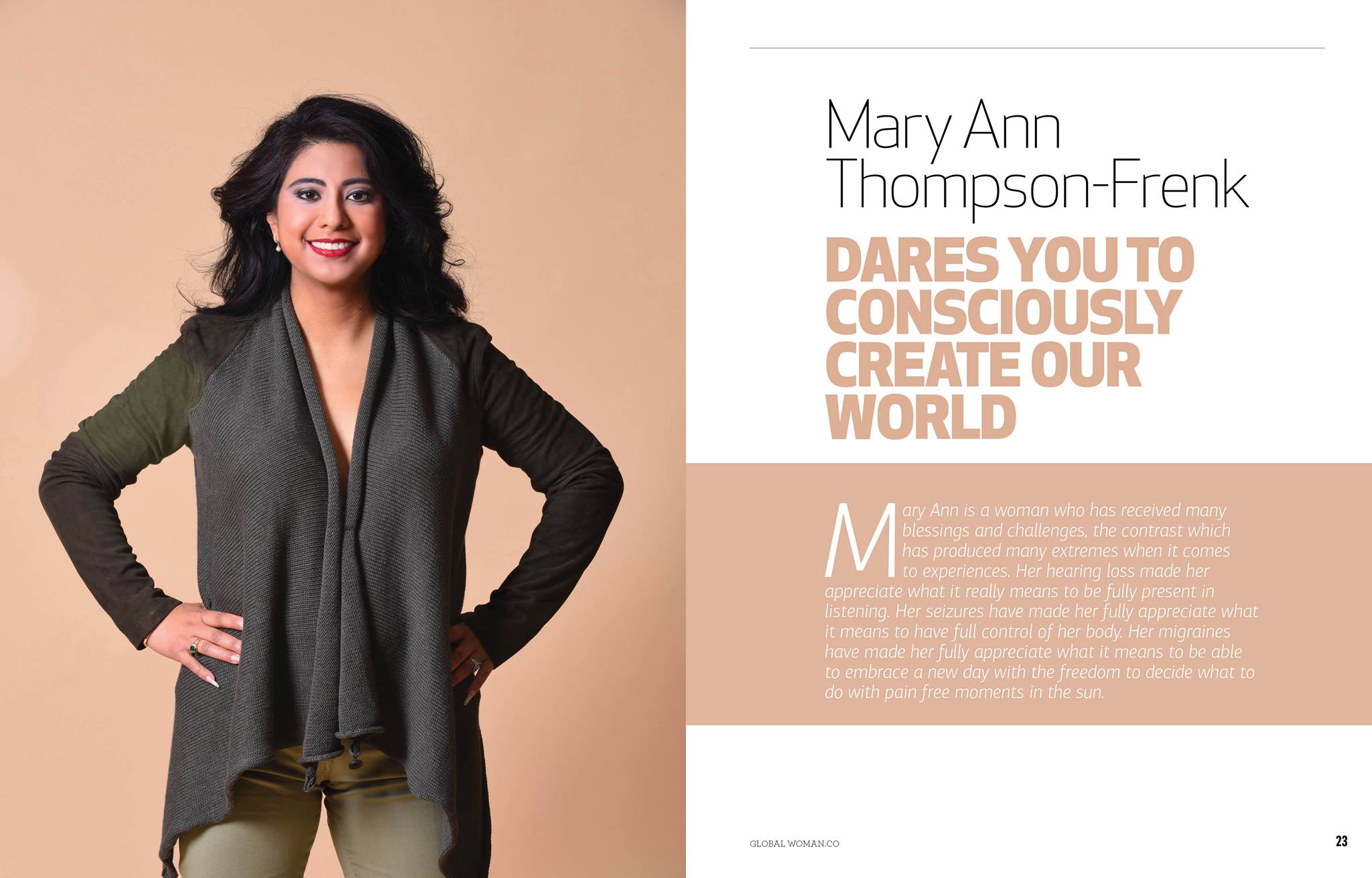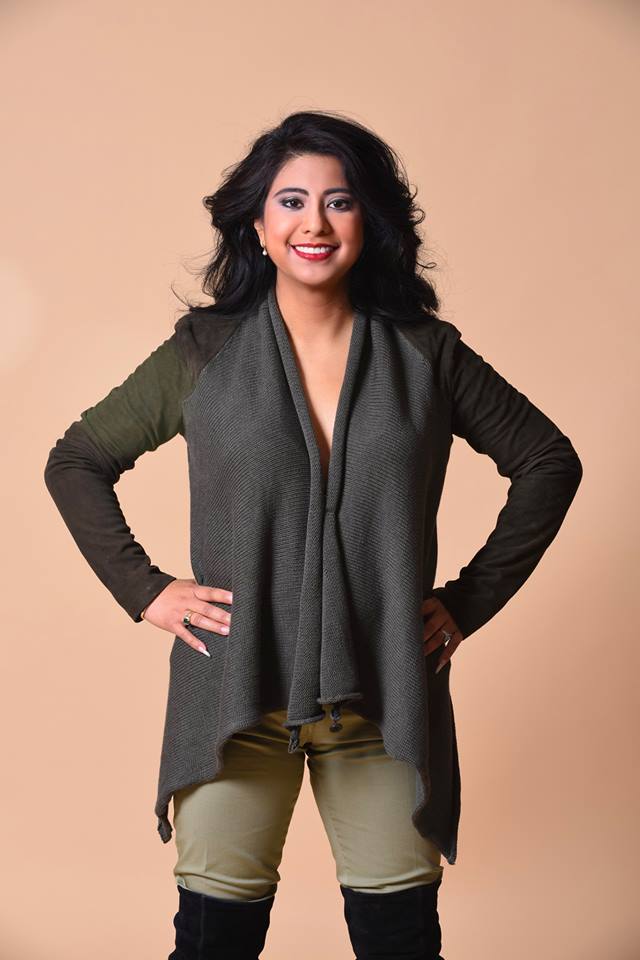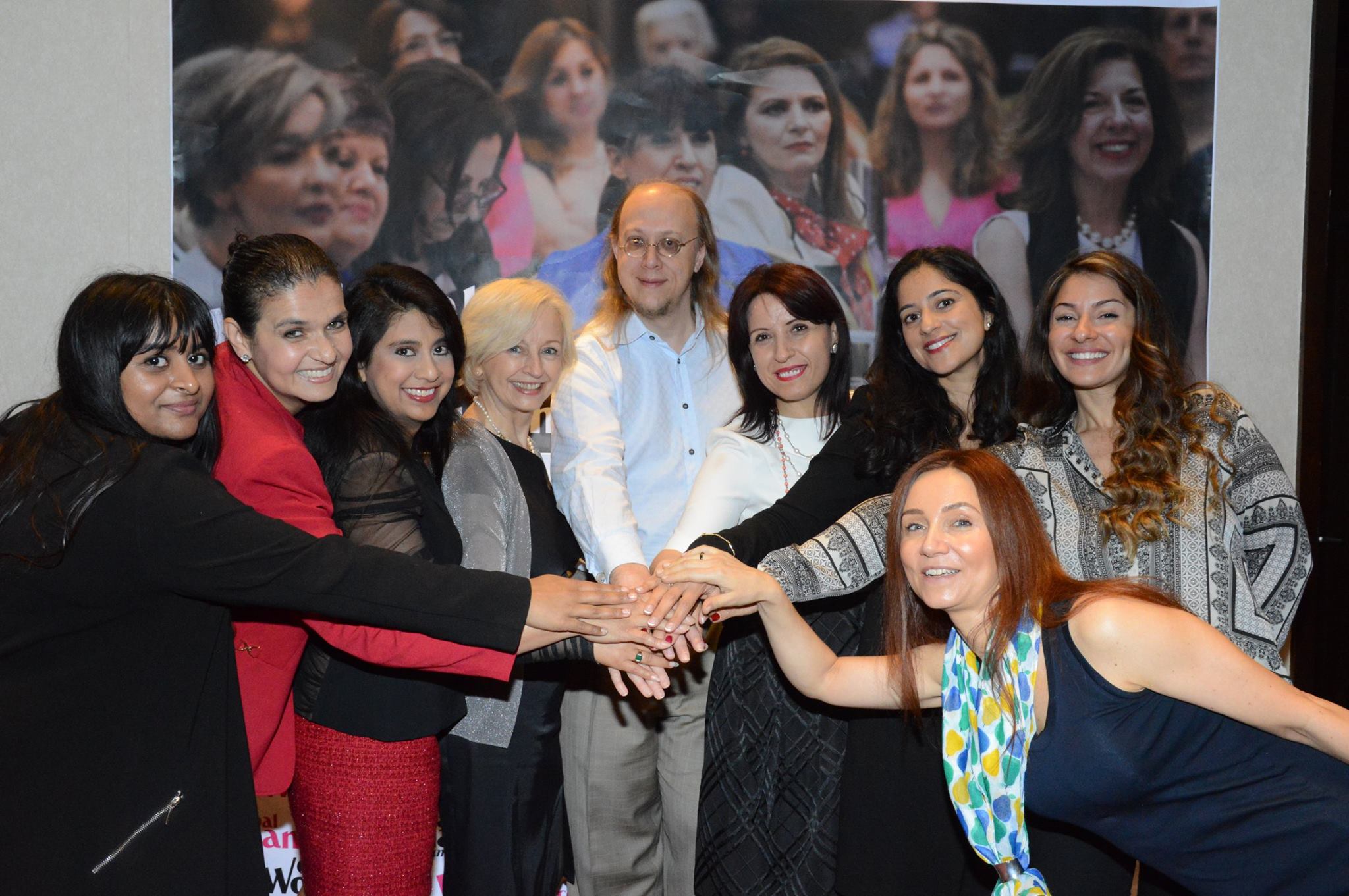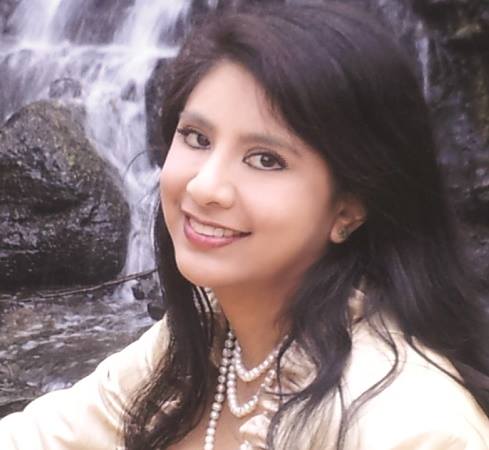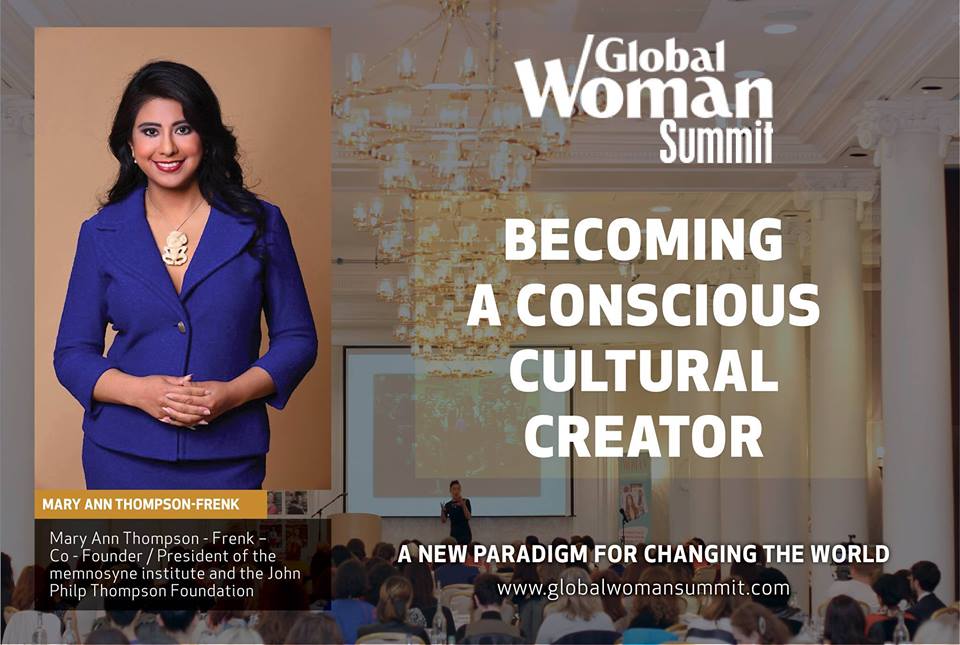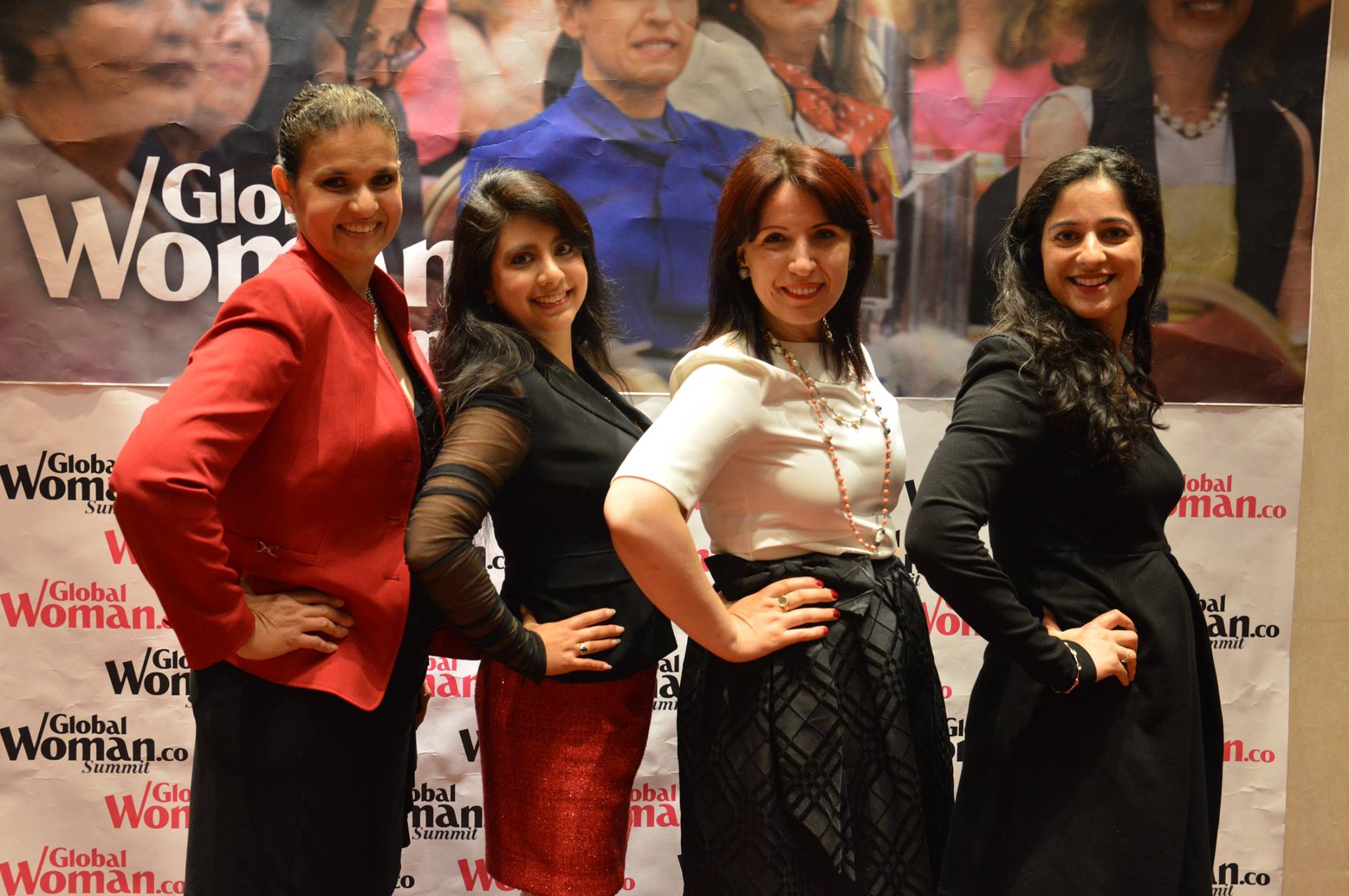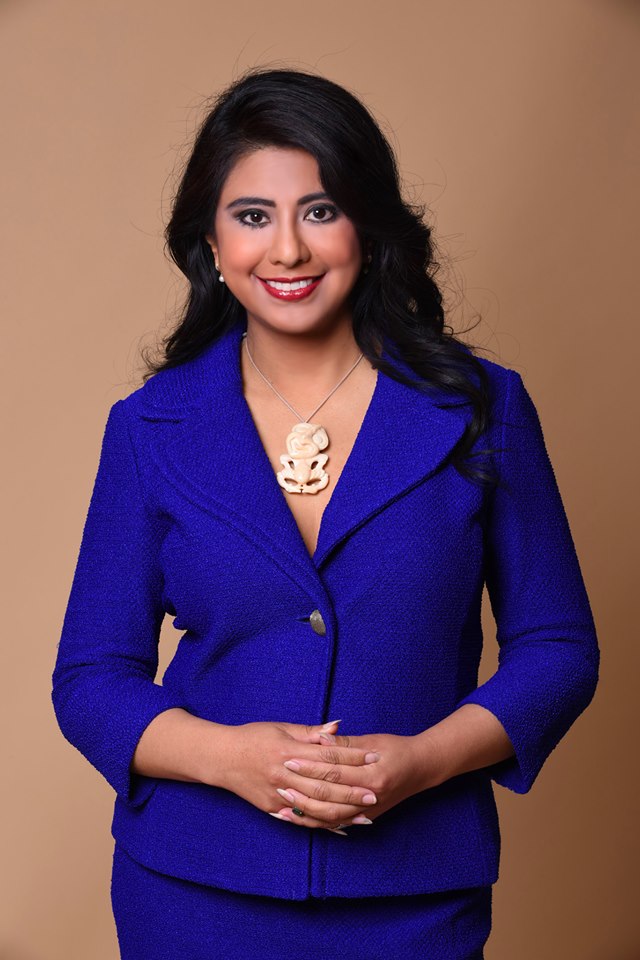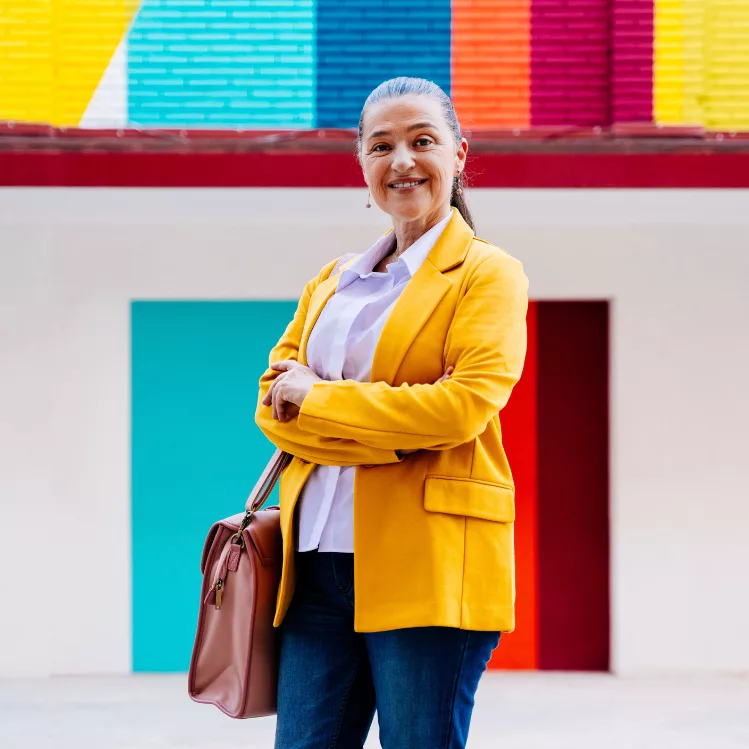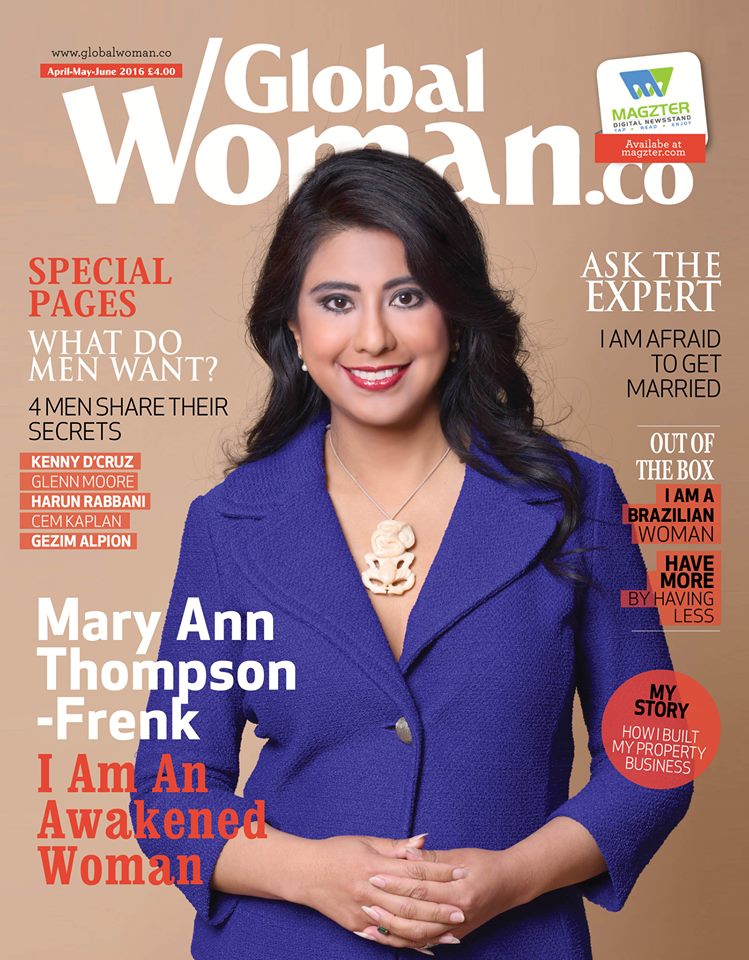
Dares You to Consciously Create our World
Mary Ann Thompson-Frenk
Dares You to Consciously Create our World
By Mirela Sula
Mary Ann is a woman who has received many blessings and challenges, the contrast which has produced many extremes when it comes to experiences. Her hearing loss made her appreciate what it really means to be fully present in listening. Her seizures have made her fully appreciate what it means to have full control of her body. Her migraines have made her fully appreciate what it means to be able to embrace a new day with the freedom to decide what to do with pain free moments in the sun.
Being raised in a powerful Caucasian family in the United States provided a contrast of being given access to the best education, the best medical care, the opportunity to meet, fall in love with and marry her husband, Joshua. Yet it also placed her in positions to experience what it meant to be spat on in the 1990’s by both Hispanics and Caucasian people for interracially dating. These extremes of contrasts have led her to feel as comfortable in the White House as in a Tolteca temazcal, or at home having tea in the House of Lords, or participating in the Shinto Oomoto Tea Ceremony in Kyoto, Japan with their spiritual teacher.
It has also made her believe that anything is possible because she has been told that she couldn’t do something and turned it around and done it more times than she can count. Mary Ann graduated from the accelerated Hockaday high school despite her hearing loss, to help negotiate the first treaty in 300 years between Hopi and Navajo Nations. Her story is absolutely amazing and reveals that a woman like her is one in a million and here on this planet for a reason. Discover more in this exclusive interview.
Who is Mary Ann Thompson?
I’d say I’m an ordinary human being who has been surrounded by extraordinary circumstances, people and opportunities that have all led me to become a humanitarian, utilizing both non-profit and for-profit modalities to help humanity consciously create the culture our species’ wishes to cultivate on this planet. By that I mean consciously creating the values, motivations, perspectives and attitudes which define how science, economics, spirituality and more will be defining our times in the 21st century.
My purpose is not to tell people what I think those values should be, but rather to help humanity to be fully empowered to choose for itself where our species wants to go. We – all of us homo sapien sapiens living today – are the first generation on this planet to have no excuse for ignorance. Becoming aware of that fact, taking upon our shoulders the fullness of what that responsibility means, and embracing it, is the first step to also becoming the first generation to intentionally choose what our species will become.
Your story is very unique and it sounds like you came to this world as a special gift. How can you describe your role in the world?
Yes, I was blessed to be adopted because I just happened to be born on Mother’s Day in 1977 at 7:11am and that made Father William Wasson of Our Little Children of The World Orphanages decide that he would make an exception, as his organization usually doesn’t participate in adoption, and allow my family, who started and grew 7-Eleven to adopt me. Five days later they flew me back to Dallas and that changed everything. In those moments, I received many miraculous gifts: my biological mother decided to carry me and gave me life, then she decided to give me a better life when she released me for adoption, then my family provided that better life and all the opportunities that came with it….but while I was hailed as a child protégée in the arts, I would visit Mexico with my parents and witness young children my age or younger painting pottery in the markets and could see they were just as good or better than I was.
This has allowed me to have two sets of perspectives in my life: the privileged one I live every day, but also the one that knows that had I not been adopted, I wouldn’t have had access to the experts who wore rubber gloves and reached into my mouth to teach my tongue the way to shape the words I cannot hear the difference between – like crown and crayon. I would probably have been assumed to possess an intellectual disability and instead of speaking at the United Nations, TEDx and the White House, I would instead be afraid to speak at all. I would probably be selling my pottery in the markets, looking at the glamorous tourists who walked past and thinking about what I would do with the power I perceived them to possess. I allow myself to put my mind behind those eyes on a regular basis and then challenge myself by asking, “Okay, now that you are that person DO the things you are empowered to do and if the means is out of reach, do the things to weave the connections to empower yourself and others to get there.”
I allow myself to put my mind behind those eyes on a regular basis and then challenge myself by asking, “Okay, now that you are that person DO the things you are empowered to do and if the means is out of reach, do the things to weave the connections to empower yourself and others to get there.”
You are the Co-Founder/President of The Memnosyne Institute and The John Philp Thompson Foundation – what does it means for you to lead big enterprises like that?
Both my husband and I pursue our humanitarian work via what we refer to as “Social Acupuncture”. By this, what we mean is identifying the points where an investment of time, capital and energy can combine to have a resounding effect. We identify these “points of potential impact” by identifying how economics, environment, cultures, demographics, religions, etc intersect. We literally map it out in a spider web format. This has led our humanitarian work to incorporate social responsible investing and conscious capitalism as much as philanthropy, and in some situations, even working with all three with a larger eagle’s eye perspective as to how the three can potentially combine to have a magnifying effect.
In our minds, it’s this type of integral approach that will make the humanitarianism of the future more impactful and the outcomes sustainable. For example, The John Philp Thompson Foundation for Non-Chemotherapy/Radiation Brain Cancer Research does not have a ton of capital. So we target cancer fighting research that is already occurring and supplement their funding so they will include a brain cancer research aspect to their pursuits. We take this kind of targeted approach in The Memnosyne Institute, where Joshua and I spend 90% of our lives’ focus, to an even greater degree by forging alliances and collaborations with both for-profits and non-profits who can help us magnify our impact.
A regional example of this is our FoodSourceDFW.org program which is the result of interfaith volunteers from every religion you can think of coming together to interview every north Texas food pantry and homeless shelter they could find. Based on the interviews we discovered that 30% of donated foods was spoiling before it could get to the hungry. Therefore the missing link was in coordinating the relations between for-profit companies and the shelters/food pantries as well as convincing the shelters/food pantries to view each other as collaborators instead of competitors. Once we did this, under the careful guidance of our Director for the Memnosyne Center for Interfaith Inquiry and Initiatives, Rev. Dr. Todd Collier, all of the non-profits benefited from greater food donations as opposed to the donations decreasing as they’d feared.
On an international scale, a major collaborative initiative we are spearheading is the “School Out of A Box” program aimed at bringing high school and university level education to the poorest regions of the world. It involves both non-profit and for-profit collaborators including The Club of Budapest International, Women That Soar, Saba Hamlet for Gender Equality, Be Earth Foundation, and Green Habitat Project, among others – the combined collaborations which are poised to take the program from Mexico to Jordan, from Nigeria to Haiti, from Native American reservations in the USA to Egypt and from much more.
You have now a global influence in many projects for social good – what drives you to contribute for the world and humanity?
Being human does. Recognizing that the many tools that I’ve been given in this life are not just for me to party it up, but rather for helping to forge a new world…whatever that world might be. It is not my goal to achieve world peace, but rather to help develop the tools that will empower humanity to one day achieve that peace. Personally, when people ask me if peace is possible, they usually don’t like my answer because I tell them it will be possible the day that our society discovers how to make it as profitable as war.
We as a species have to rediscover that we want to continue living on this planet with the quality of life it currently provides. By that I meant getting to breathe clean air, taking for granted the water, the nutrients in the earth that yield the crops we eat and getting to live in the shared agreements that enable us to engage in civilized discourse, settle disputes and advance ourselves technologically. But the scary thing is our species continues to evolve the “technological” hardware without putting as much emphasis towards developing the sociological “software” to balance our potential impact on each other and the planet.
People like to say that globalization and capitalism are the enemy. But the truth is money is like a hammer – I could hurt someone with it, or I can build something with it. It is a tool that needs an informed population to utilize wisely. Globalization is the natural direction for our species as well, because with our increasing population, of course our economic systems will evolve to become more interconnected than ever and the outcome is for our environmental and sociological systems to become interconnected – even interdependent.
People like to say that globalization and capitalism are the enemy. But the truth is money is like a hammer – I could hurt someone with it, or I can build something with it. It is a tool that needs an informed population to utilize wisely.
For us to have an accurate understanding of where we are as a species, we must recognize that globalization cannot just be thought about as increasingly interconnected economic systems, but rather the opportunity to intentionally recognize how our cultural, religious and ethnic ideologies will be processing how their geographic locations are now interdependent alongside the whole. This means that for the first time in the history of our species, we must intentionally take upon ourselves the inspiring challenge of creating the culture we want, consciously and with deliberate, informed intention. Make no mistake, what you are doing has a profound impact that can resonate across the globe, requiring from this time in history forward, an educated, informed world population with which to make the decisions necessary.
This does not mean we will agree, but that our debates must become based on understanding the urgency to see past the memetics at work in a given political system, and into the heart of what it means to be an intelligent, caring member of our species. If we do not take upon ourselves this challenge – which in itself defines the challenge of the 21st century, we risk nothing less than the derailing the growing potential of our species as a whole and all the negative impact such negligence will mean for our planet and communities worldwide. Understanding this drives me more than anything, to do my part to help get our species where it needs to be.
Who are the people that have inspired you to follow this path?
While I never knew my grandfather, Joe C. Thompson, his example of using his for-profit corporations to help fight segregation in the south in the 1930’s, 40’s and 50’s has affected me deeply. He understood the reason people feared change, how to articulate the reasons for embracing change in different ways, based on the values and motivations of those he addressed. For example, arguing that integrating the State Fair of Texas would generate more money for all – which eventually helped to rid the “Ku Klux Klan Day” and the “Negro Day” and instead make every day at the largest state fair in the United States fully integrated all the time, and he used a diversity of modalities to change people’s minds.
He was fond of saying, “If you are one of the people who can see seven blocks down the street when most can only see one, then speak to the people about what is two or maybe three blocks down from where they are. If you try and tell them about what you can see so much further down the road, they will not understand you. But you can guide them towards the greater goal for the day they or their children or their children’s children are able to see what you can see today.” I’ve learned to pay attention to those words in just about everything I do.
“If you are one of the people who can see seven blocks down the street when most can only see one, then speak to the people about what is two or maybe three blocks down from where they are. If you try and tell them about what you can see so much further down the road, they will not understand you. But you can guide them towards the greater goal for the day they or their children or their children’s children are able to see what you can see today.”
Another person who strongly inspired me is my father, John Philp Thompson, Sr. Dad would often say, “The easiest job in the world is to be a critic. Anyone can criticize, anyone can say ‘I wish someone would fix this or that’. But you be different. If you recognize a problem, ask yourself, ‘What can I do to help solve it?’ and then do it! This is not always the easiest path, but it is the most rewarding one.” Hearing those words all my life and then later hearing more about what grandad did, what he stood for and encouraged those around himself to stand for, set the bar high for my own life.
My father was also a catholic mystic, so he took dreams, visions, meditation and prayer seriously. From the time I was a little girl, I’d had a dream of a place where there as a building for science, a building for health and medicine, a building for spirituality, a building for the arts, etc, where people could come from all over the world to share their knowledge for the benefit of humanity. I would tell my father about these dreams and he would say, “That is why you are here. That is why you were brought to us and if it is important to you to fulfil your destiny, you will do it by the time you are thirty.” It was a tall order and I would ask, “Why doesn’t Spirit give this vision to someone like you with the power and influence you have?” and he would answer, “Because you have been assigned this task and with the tools to achieve it.”
That is why you are here. That is why you were brought to us and if it is important to you to fulfil your destiny, you will do it by the time you are thirty
The dreams kept repeating into my twenties. One night, while we were in Mexico at Casa Thompson – our family’s shared vacation home there – I dreamed the same dream and complained the next morning that the vision was impossible to achieve. My father told me, “Pray and see what God says about that.” I did, and I had the same dream again, but with a twist: at the end of the dream was my father as a little boy playing with a paper boat in a barrel of water. It was so peculiar it woke me up.
Almost immediately after, my business partner was knocking on the door. I answered it to find him excited and not being able to wait to tell me what he had just seen: He’d asked the people at Casa Thompson to take him to some pyramids off the usual tourist list and they’d taken him to Xochicalco. He said there was a pyramid for science, one for health/medicine, one for arts, etc. He explained that the Native Americans had once travelled on foot from all around the American continents to reach it, setting aside disputes, wars, etc to help those traveling there because they understood that the people headed there were doing so for the benefit of humanity.
Each pyramid’s architecture was designed with multiple cultures blending their styles together representing the unique coming together for the sharing of knowledge. Then he paused and said, “And I don’t know why I am telling you this, as it is the most unimportant part of what I saw, but there was a little boy there playing with a paper boat in a barrel of water.” That floored me! I went to Xochicalco and realized that half the world – North, Central and South America – had achieved the vision I’d had…and they’d done it without all the technology we now possess. In that moment, I realized the dream was not impossible. I shared it with my father and he just smiled, “See, you are on the right path.”
Others who have greatly influenced the life journey and purpose behind The Memnosyne Institute include many spiritual leaders from around the world whom Joshua and I are now blessed to count as close friends, including but not limited to one of our closest spiritual mentor, Ricardo Cervantes Cervantes, (Thlalhuizcalpanteculttli), the spiritual leader of the Tolteca people of Teotihuacan. Our relationship with him and his people are a major part of why we included serving communities of “Indigenous Cultures” as a priority in The Memnosyne Institute’s international, and local outreach. Others who actively participate in encouraging us forward include many elders, such as The Very Reverend James Parks Morton, who serves on our Board of Directors, Gregory Gomez, an apache spiritual leader, the late Her Excellency Oye Aina Olomo who was the first female Yoruba chieftain in all the Americas, and we are blessed with many luminaries on our Advisory Board such as Dr. Ervin Laszlo, Dr. Don Edward Beck, Jan Diedre Strimple, Adolfo Ayuso Audrey, Barbara Marx Hubbard, and Lawrence Bloom.
What is the influence of your family in your life?
It’s easy to assume that we make our own decisions about our life paths, and while my family never lectured me about their values and roles as human rights advocates, I have been amazed to learn how there is an undeniable current of it in every generation. For example, my grandmother’s, (Peggy Philp Thompson), father, John Philp, was made a Knight Templar in the Order of Saint Gregory The Great because of his interfaith work. Decades later, my grandmother helped to sponsor the first interfaith temple in the United States, Thanksgiving Square, located in Dallas. I didn’t know any of this when I began my own interfaith work.
There are still even greater examples wherein the battles fought by previous generations seem to overlap with later generations. For example, Grandad fought the KKK because he had gotten to know many African Americans via the time he was in charge of what was then called “Negro Day” at the State Fair of Texas. He would recognize individuals as being good workers and wanted them to be part of his start up. In the process he got to know many of them and became friends. He then did the math and explained to the State Fair of Texas that it would make a lot more money if integration was permitted. But that was not so popular back in the 1930’s, 40’s, and 50’s to say the least. As a result the Klan would burn crosses, and harass and threaten my grandparents and their children.
At the time they had six children, only three of who grew to adulthood, John, Jere and Jodie. But my Uncle Jodie told me for a seventh grade report I was given years ago, that he recalled being woken in the middle of the night by my grandmother who said, “It’s reading time!”, and thinking she was nuts as she herded all the kids into the back of the house. One night, he snuck away from the group to see what grandad was doing and was stunned to see all the cone hats and burning cross and recalls them turning their heads towards the window where he was looking out. He said grandad shoved him onto the floor, out of sight, and only then did he realize grandad had a hunting rifle hidden in his hand behind the door as he yelled at the Klan to leave.
Later, my Uncle Jodie explained that both his parents explained that they were trying to hide this fight from their children because they didn’t want them to grow up with fear because fear is where hate begins. Decades later, when I was interviewing Uncle Jodie for my homework assignment, and he told me this story, I was flabbergasted. The following day I met a woman at the Brookhollow Golf Club who was a friend of my grandmother’s and the lady explained that she and the other women would share tea and sandwiches while paying bridge with my grandmother, to find out what my grandparents’ schedule was so their husbands could don on the coned hats and white sheets. The woman broke down crying and pointed to me saying that the fact my family had evolved to the part it could interracially adopt wasn’t a surprise to her because she had known my grandparents and what they’d stood for.
When I read the report to my father before taking it to school, he told me that it was a direct answer to a prayer he’d made about whether or not to permit an LGBT human rights march at the State Fair. I’ll never forget what he said, “Now upon learning all this, I know that the issue is not about my religious beliefs, but rather the fact that if I were to deny these people the right to peacefully march I would be doing no less than spitting in my father’s eyes.” Our home received a lot of threatening calls the months that followed, but decades later, Jean Carpenter, who had been the PR person for the State Fair of Texas told me that Dad had done more than his word…he had answered all the death threats and vicious name calling by marching himself.
Years later we learned that the grandson of the KKK’s Grand Dragon who had lead the terrorizing of my grandparents and their children had ended up being the coordinator for our interfaith volunteer programs in Dallas. He would joke, “Well, it took a few generations, but your family won!” So yes, sometimes the times can seem very dark and intimidating, but when the legacy of a family is based on values, stories, and a deep spiritual calling to serve humanity, that legacy is strong enough to permeate through generations and invite the ones who follow to add onto the legacy. What both my grandparents did – not just my grandad – was create a kind of code or creed that demands excellence, ambition, and determination, but not just for one’s self and more importantly refused to separate what one did to make money from what one does as a humanitarian. It’s also quite intimidating, as after knowing what they were willing to risk – the lives and well-being of themselves and their family – to help fight for desegregation, and how it inspired my father to face the threats he faced to stand up for the human rights of those different than himself, there are no excuses to do less in my own life.
Can we know a bit more about your story and the relationship that you have created and invested for years with your parents?
My mother and I did not really get along through most of my teenage years and twenties. However, I have always admired her drive and determination to achieve whatever she set her mind to. For example, when she was attending college, she managed to receive duel degrees in business and nursing while teaching herself to twirl a baton with a stick and still beat out the girls with personal trainers to become the majorette for the school. And she did all this while juggling two jobs, paying for a house for herself, her aunt, who’d raised her, and another house for her brother, his wife and their three children. She did all this and later became an airline stewardess for American Airlines so she could see the world.
My mother taught me a lot about strength, determination and following one’s dreams. I can’t begin to imagine how she accomplished even a quarter of what she did, and am frankly in awe
My mother taught me a lot about strength, determination and following one’s dreams. I can’t begin to imagine how she accomplished even a quarter of what she did, and am frankly in awe. She has had a hard time understanding why my husband and I have made some of the choices we have, but she openly admires the impact we are having as more and more of the seeds we have planted are bearing fruit now. I think it is important to be honest about the fact that not all daughter/mother relationships are easy, but that a level of respect can be attained where there is love and that it is not always necessary for each other to fully agree with the actions or focus the other takes in order to share that love and respect for each other’s character.
My relationship with my father was a profound one for me as he made the conscious decision to, in his words, “Raise you like a son and your natural femininity will take care of itself.” What he meant by that was teaching me how to stand to take command of a room without saying a word; how to shake hands to demonstrate one’s personal strength; and how to read other’s body language. He used to take me to his office and ask me to sit there quietly observing as he had his meetings. Then, afterwards, he would quiz me by asking, “Who had something to offer that didn’t put it on the table? Who was lying? Who was nervous?”, etc. These are the lessons that men have been teaching their sons for centuries, and I am just blessed that my father saw in me a pupil he deemed worthy of his time to teach that way.
“My relationship with my father was a profound one for me as he made the conscious decision to, in his words, “Raise you like a son and your natural femininity will take care of itself.”
However, one of the most profound impacts he had on me was when in high school I was feeling particularly depressed. He must have had an intuition as he never came home early, but that day he came home, found me crying on the stairs and told me directly, “Life is not always fair and while there are many things that others may have done better, you are at the age where you must take upon yourself the responsibility for how you will react to the world. You can go through life blaming all the things or people who hurt you or you can decide here and now that you will not be a victim and have the power to determine your life.” As a teenager, I felt that his words were lacking compassion, and was hurt and angry from them. But looking back, I feel immense gratitude for the lesson he imparted to me. I have had to make the decision after many things in life that despite whatever I might be facing or have faced, that I refuse to think of myself as a victim. There is immense power in that.
I have memories of after having experienced running from an attempted gang rape, survived molestation and stalkers, trying to hide by wearing big frumpy clothes and hoods. I only attracted more attempts to victimize me. But when I made the conscious mental decision to no longer be a victim, I could wear whatever I wanted to wear and wasn’t harassed any more than the everyday woman. This taught me what it is to reclaim one’s power.
How has this experience helped you to become who you are today?
I was able to witness this reclaiming of power on a much greater scale in later years when after hosting numerous indigenous scientists, environmentalists and leaders for the International Summit on Indigenous Environmental Philosophy, we invited the Maori representatives to stay a few extra days to travel from Dallas to Houston to view the Oceania collection at The Menil Collection. It turned out that The Menil Collection had a surrealist’s collection and within it a collection of things famous surrealists picked up in their travels and used for inspiration, (in other words, whatever knit knack Salvador Dali might have bought on vacation).
When the Maori leaders went in there, they began to weep and sing. It turned out that back when the British first arrived in New Zealand many of them had a very literal interpretation of the Bible. This led them to believe that women were supposed to have as much pain as possible during childbirth because Eve ate the apple and therefore anything that reduced the pain went against God’s wishes. At the time, the Maori possessed what they called, “birthing flutes” which they believed reduced the pain of childbirth when played. So the British set fire to the flutes and killed all the flute carvers, musicians and midwives who knew how to use the flutes.
We’d had no idea, nor did we know that they had a prophecy that their people would receive their knowledge of the birthing flutes back on September 21, 2012. Thankfully, our Executive Director, Phillip E. Collins, is one of the leading curators in the USA and was able to negotiate access to the flutes for the Maori. Of course we were willing to take any date they gave us, but the museum selected September 21, 2012 and on that day the Maori entered the building carrying photographs and drawings of ancestors who’d mourned the loss of the flutes and their musicians, midwives and carvers studied, played and recorded a sound bank with the flutes. They took the sound bank back to New Zealand and the recorded songs were shared among their people. Knowledge of carving the flutes was accentuated by the flutes being put through an MRI revealing exactly what the shapes were inside and carvers replicated them back in New Zealand.
One of the few female Maori Chieftains, Rangitunoa Black, used the opportunity to heal rifts between families as multiple generations participated in learning how to carve the flutes and eventually the songs were played at a national rugby championship where whole generations of Maori all over their nation heard the flutes for the first time.
A few years later, the Maori received some of us in New Zealand during a cultural exchange we were facilitating between the Maori, Tolteca and Mayan people. While there, they presented me with a “Ticki” – a small woman carved from a whale tooth. They explained that whenever a whale beaches itself, all the Maori tribes have to decide together what is to be done with each part of the whale and they had decided to carve and present me with the figurine in recognition of the small part we’d played in their reclaiming their cultural knowledge. As they placed it around my neck, I began to realize that what had occurred to them had been nothing less than a cultural rape and what was occurring now was a reclaiming of their cultural dignity, knowledge, strength and pride. I recalled what it had been like to relearn how to stand, walk and speak without thinking of myself as a victim, and it allowed me to understand in my own small way the depth of what had occurred there and the sacredness of what we’d been entrusted with. Today, I often wear the piece when addressing any group that is fighting for their human rights as it reminds me that the most powerful place to be is in service to others and through them, to Spirit.
What are the main challenges that you have faced toward your success and how do you manage difficulties in life?
When I was little the type of hearing aids that were available fit in the ears and had a huge box which hung around the neck. So kids would turn it all the way up and shout in my ears. They would also say that my skin color was brown because I never bathed, etc, etc. The long and short of it being that it was quite a daily struggle for me.
So one day my father took me to Turtle Creek, located near our house, and handed me an acorn. He told me that that acorn had the potential to one day turn into a tree. I was amazed as I saw him point to the huge tree behind him. He then told me that the way the acorn achieved this was because it spent its life struggling to reach the sun. He said it never would, but it was in the determination to do so that it dug its roots deep into the earth for the strength to reach high into the sky. He then told me that he and my mother had decided to give me the choice to attend an easier school designed for the deaf and hearing impaired. He said it would be much easier for me, but that I would gain much less. He then pointed out that at Hockaday, where I was going, life would continue to be very difficult for me, but that I would gain much more. He asked which I wanted to do. I realized in that moment that I was actually making a decision that went much deeper than just where I would go for first grade, but rather that I was making a decision that would define my personal life philosophy. I didn’t have the words for that then, but the understanding was there deeply enough that I chose to stick with Hockaday.
It was hard. So hard that upon graduation I crossed the stage to receive an empty diploma to save face and then took an accelerated university level course to finish qualifying. But I graduated from what is considered one of the toughest all girl schools in the nation – and that was something “experts” had told my parents I could never achieve.
I share this because it’s important to let people know how difficult things can be along the journey, and yet how what can seem like an individual decision in life is actually establishing our personal life philosophy. It hasn’t always been easy for me to handle challenges. I’ve dealt with stalkers, molestation, seizures, asthma so bad I spent quite a bit of time in hospitals, migraines so bad they kept me in the dark, throwing up and in excruciating pain for days and nights on end, racism, misogyny, homophobia (I’m bi), a stroke, a broken heart following the end of an engagement, kidnapping attempts, learned to kick- box after duel knee surgery and much, much more. But the biggest challenge I’ve faced is always myself in the end. The way I get through this is I recognize that I am the pen, not the writer, the clay, not the sculptor…that all these blessings and opportunities are tools that the Creator has given me to be in service to world.
This allows me to see life as a collaborative dance with Spirit. This sometimes means a lot of faith. For example, one year the Hopi Nation lost its entire corn crop and without it they couldn’t even trade corn with their Navajo neighbours to obtain the lamb the Navajo traditionally sold for the corn. It was either let them starve or figure out what to do. We reached Anson Mills who agreed to sell their organic heirloom non-gmo blue corn at cost. It would cost us $60,000.97 to afford enough for the whole tribe.
As my inheritance is kept in a trust, I do not have free access to it and must make a business argument for every cent my husband and I receive for our personal, humanitarian and for-profit endeavours at the end of each year. If it wasn’t part of the agreement at the former year end, it is difficult to obtain more. The blue corn crop crises had hit at the end of the year and we didn’t have access to the trust. But we realized that if we didn’t pay the electric bill, if we didn’t pay the water bill, if we sold many of our investments, we could squeeze out $60,000.97.
We didn’t tell anyone about what we were doing and spent the week manually raising the garage door, etc. Then we received a letter in the mail. It turned out that my grandmother had made an investment long before I was born and upon the completion, it was to be subdivided among all her grandchildren equally. We opened the envelope and there was exactly $60,000.97. So, I’m not saying that miracles will always occur, but I am saying that when you surrender to the relationship you have with Spirit – however you define it –and let it be the basis which guides your life, the synchronicities will increase along the way. Or as Pablo Neruda says, “When you are on the right path, the soul of the world rises up to meet you.”
Knowing this does not always make things easy, and sometimes it is important to remember that our bodies are in service to our souls and not the other way around. So if it is in your soul’s best interest to learn a lesson that is stressful to the body or mind, its needs will come before our conscious desires. What I can say is that the result of this dynamic, if embraced instead of resented, will evolve the deepest essence of what and who we are.
Some of my biggest current challenges are that people assume I have free access to the full 7-Eleven fortune, and sometimes magazines, (like Forbes Mexico did on the cover of their June-July 2016 issue), wrongly promoting by omission the idea that I am “the” heiress of 7-Eleven. The truth is I have a huge catholic family – and that means there are 14 grandchildren, including me, and many more times that in great grandchildren, and even great, great grandchildren that make up the Thompson Clan. On top of that, I do not have freedom to do whatever I want whenever I want with my inheritance. On top of that, in the United States all legal public non-profits must raise one third of the amount of money the founder puts in each year from an outside source. This means that without increasing donations, Joshua and I will never be able to increase what we can legally put into The Memnosyne Institute. So we always need donations and outside support despite what the media may try and paint otherwise.
You are a global woman involved with your projects around the world – where do you think you belong?
I believe I belong anywhere where I can accomplish the most good. Right now one of The Memnosyne Institute’s projects which excites me the most is the collaboration we have forged between the life’s work of Dr. Don Edward Beck and Barbra Marx Hubbard. As many are aware, Dr. Beck’s work, based on the Spiral Dynamic patterns of humanity’s sociological development discovered by Dr. Clare W. Graves, can identify what influences are at work in a given society, thereby revealing what kind of solutions will have the greatest chance of having a pragmatic, measurable, positive impact. Meanwhile, Barbara Marx Hubbard’s process, the Wheel of Co-Creation is able to sift through a given community to first identify those with solutions most relevant to the community’s shared needs and then sift again to identify those with a predisposition for active collaboration.
These two brilliant leaders within the integral community are combining their methodologies with the help of engineers Dr. Kevin Kells and Juan Carlos Kaiten, to create a process that will help any community, local, national or international, be able to strategically move closer to achieving the United Nation’s Sustainable Development Goals. This is highly significant as while there are many technologies and methodologies for collecting data, there is very little that can reveal the interrelationship and influences the various data have on each element of a given society and our species at large. One of these will be located on the Memnosyne Institute’s Campus for Humanity’s Center for Outreach which will also offer offices for The Club of Budapest Americas, Centers for Human Emergence, and the Foundation for Conscious Evolution so that the integral community at large can have access, study, provide feedback and utilize the information which will be projected in a hologram format in the building designed by architect Keith Critchlow.
The Memnosyne Institute and Foundation for Conscious Evolution are also forming a B-corp, Planetary Indaba, (named that by Don’s wife, Pat Beck), that will be financed in part by the Be Earth Foundation led by Lawrence Bloom, that will provide the means for multiple VSM/WOCC to be constructed as needed and animated over the internet for locations in Berkeley, the United Nations (as part of Barbara’s vision for a Peace Room/Office for The Future), Monterrey, and any other communities that desire to have access. The hope is to help countries to be able to make informed strategic decisions that can make the difference for our species’ success in attaining the 2030 Sustainable Development Goals which are critical if humanity is to survive with the quality of life our planet and its resources currently affords.
A secondary, but significant, benefit of the construction of VSM/WOCC is that it provides an opportunity for the first time for humanity to “look in the mirror” and to witness what a given community’s shared consciousness is at any one time – be that a community, a village or the globe. We are deeply grateful to Dr. Ervin Laszlo for his encouragement and guidance through this process. I have met with people in the White House’s president’s cabinets on Technology and Science, Environment, and Native American issues; the head person in charge of the country of Mexico, meeting it’s Sustainability Development Goals and here in London in The House of Lords, to meetings with people in the United Nations and all of them tell me that this is the technology they need to help the world get where it needs to be.
Similarly, our “School Out of A Box” project is in demand around the globe and through partnership with the Be Earth Foundation headed by Lawrence Bloom, Women That Soar headed by Gina Grant, The Club of Budapest headed by Dr. Ervin Laszlo, and Green Habitat project headed by Tania Arryales Rodriguez, (the architect for the project), among many others, including Memnosyne’s Director for our Center for Global and local Outreach, Coke Buchanan, we hope to have schools built in Mexico, Haiti, Cuba, places in the African continent, and more. We are aiming for areas where people are forgotten, ignored or dismissed. We don’t want to provide unnecessary competition if a school with a teacher already serves a community. Rather, we want to go where no educational services are being offered at the high school and university level.
This doesn’t mean that the students all need to be young either. Our hope is that anyone can continue their education, making it possible for single parents who must work at jobs, as well as for young people who feel bad about leaving their homes to go to school, but who want to get an education without sacrificing the income they need to work daylight hours to earn. The core high school and university curricula will differ depending on what education is recognized as accredited in each country.
At this time, it seems as if something is accredited in the USA, most third world countries recognize it, so we are looking to work something out along these lines, but doing it per country. In addition to providing the accredited curricula, The Memnosyne Institute will also provide two required courses: We have contracted Dr. Don Edward Beck to create a curricula titled “Introduction to Globalization” that will provide people in poorer areas most affected by globalization to learn the vocabulary to speak about the ways it is affecting their lives and spiral dynamics, so that they can also articulate the difference in motivations between both internal and outside sociological/economic/ecological influences of their part of the world.
The other course is being led by Memnosyne board member, Kunal Sood, who is “curating” a curricula titled “Becoming a World Citizen” (other titles have been suggested to be “Becoming a Responsible World Citizen”, “Becoming an Empowered World Citizen”, etc.) This curricula is being designed by Dr. Swami Satya Brahmnanda, plans to pull upon the works studied by Gandhi, MLK, and others which empowered them to be peaceful agents for positive change in their communities. We are also hopeful to bring in information from Stanford University professor, Dr. Dotty, a neurologist who is studying the beneficial effects of compassion on the human body.
The hope is by integrating that information it will inform students as to the self-serving health benefits of living compassionately. We are relying on the expertise of Kunal Sood to help meld these two together. I truly believe these two projects have the potential to have a remarkable impact on the world. In order to make them happen, I will continue to reach out to any individual, organization – for-profit or non-profit, community, or seat of government, to see that these projects have every opportunity to transform humanity. In essence, one is educating the decision makers at all levels of society and world leaders, while the other is aiming to equalize access to education at a potentially planetary scale.
I invite anyone who feels inspired by either of these initiatives to contact me to see how you can become part of these exciting solutions and tools for our species’ advancement! And that right there is probably the best answer as to where I feel I “belong”…I belong anywhere where I can actively collaborate with equally empowered individuals wanting to magnify their positive impact in the world!
What is your opinion about women who are investing in their future and becoming leaders and decision makers?
Women need to see each other as collaborators and learn from the men’s “Old Boy Networks” how it’s by empowering others that we increase the influence of our own networks and forge opportunities for ourselves in the process. I am tired of women who either idealize our gender’s intentions or feel competitive with other women based on the misbelief that there is room for only one of us at the top. Minorities need to get over that same misconception too. Women also need to recognize that not all men are bad and that we only strengthen our own gender’s advancement by not being opposed to embracing men as mentors, mentees, friends and collaborators.
Being a feminist means believing our value is equal to our brothers, not prioritizing our gender over them. What I also want to share with women who are leaders is to embrace your capacity for compassion and empathy. Empathy is a remarkable tool towards understanding other’s motivations and that information will allow you to be more strategic in your own actions. Women too often try to become leaders by attempting to become masculine. Power, the capacity to inspire others to follow your lead, is not a masculine trait and therefore there is more than one path towards achieving, maintaining and growing your own empowerment. Every struggle you have had has honed your own empathetic acumen…use it.
As far as women’s role as decision makers are concerned, I want to answer with a short story: When I was little my father would bring home stacks of “homework”, and I was a nosey child who looked through the pages. One time I found a list of countries that each had a dollar amount next to it going from 15 cents to $25. My father explained the shareholders had wanted something manufactured for $7.50 and he was going to go to whatever country listed that amount as their requested compensation. Being in fourth grade, I saw everything in black and white terms and therefore said matter of factly, “Well then, why don’t you pay the $7.50 your shareholders have already approved to a country asking for 15 cents and transform their lives while still making your company happy?” My father stared at me for a long moment, blinking. Then he got on his knees and looked me in the eye and said, “Thank you for reminding me what my real job on this earth is.”
I’d forgotten all about that when in high school he came into my bedroom, tossed a book on the bed and said, “Remember how you asked me to consider doing that? Well, I did, and the community has built roads, schools, clinics and more and not a dime was charity.”, he paused then added, “Every high school graduate should be required to read that book as it will show the world you are inheriting.” After he left, I picked it up and it was “The Lexus and The Olive Tree” by Thomas Freedman explaining globalization.”
The reason I share this is because my father was a humanitarian, but like many people he put his business hat on and took his humanitarian hat off when making what seemed like basic every day decisions as CEO of a major corporation. Here was a man who had fought to legalize profit-sharing, initiated the first and second nationwide collaborations between a corporation, non-profit and the public, (March of Dimes and Oak Farms and Muscular Dystrophy and 7-Eleven), and who was a human rights and environmental activist…yet, he had not considered that every day boring decisions could have a far reaching impact.
So my challenge to the decision makers out there – both women and men – is to recognize that you are never not part of the intricate network of overlapping, often tangling, economical, sociological and environmental influences. When you keep this consciously in your mind, you will find that your career – whatever it is – can become an impactful force for change. Take this mantle of responsibility on consciously because you are that empowered whether you want to be or not. Choose ignorance and you will be part of the problem. Choose to embrace your potential to impact the world around you and you will become nothing less the kind of leader our species sorely needs…the kind of leader who recognizes that with every decision you are consciously creating the values, perspectives, environment, etc, in other words, the global culture, around you. Choose to become a Conscious Cultural Creator, and your actions could well resonate positively for generations in ways you can’t begin to imagine. Ask yourself, what kind of ancestor will you choose to be?
What is your vision for the next 10 years?
In many ways, I had wished to be further along towards achieving The Memnosyne Institute’s own sustainability by now. Currently, every dollar anyone donates goes directly to programs as we cover 100% of salaries as well as the majority of the programs. But with the world economy doing what it is doing, we need to have many more people joining in our efforts to help grow our programs to match the rate of growing demand for them. Our organization has three different areas – our Campus Without Walls which includes all our programs,(including our international chapters in Japan and Israel/Palestine and our Cultural Center Programs in Teotihuacan. Also the Yucatan and hopefully soon one for the Maori of New Zealand as well), our Virtual Campus which is a means to provide a network of networks, GlobalCollaborationSource.org connecting all types of humanitarians who approach their work with an integral understanding of how multiple areas are interconnected.
It incorporates online dating technology, which instead of looking for someone who is tall with blues eyes, helps you find someone doing social responsible investing in a particular village, or an activist fighting for women’s rights in India, etc. Our aim is for the platform to empower other humanitarians of all modalities around the globe to be able to find ideal collaborating partners.
We are currently working with computer engineers Juan Carlos Kaiten and Michael Gosney to combine what we’ve developed thus far with what Barbara Marx Hubbard is hoping to evolve. Lastly, we are working on building the Campus for Humanity in Dallas, Texas which is inspired by Xochicalco, the ancient center, which once served the same purpose. World famous architect, Keith Critchlow, has designed the first two buildings, our Center for Spirituality and our Center for Global and Local Outreach, which will house a hologram projection of the Vital Signs Monitor/Wheel of Co-Creation, as well as exhibits revealing the same patterns revealed in the VSM/WOCC which exist in biology, quantum physics, and more, making the building itself into a means for teaching.
The second floor will provide offices for organizations with an integral understanding, including The Club of Budapest, The Dallas Institute For Humanities and Culture, Centers for Human Emergence, Foundation for Conscious Evolution, and others. The third floor will house offices for all seven of The Memnosyne Institute Centers: Interfaith Inquiry and Initiatives; Environment, Science, Economics & Technology; indigenous Cultures; Health & Medicine; Spirituality; Arts; and Global & Local Outreach. In the next ten years I hope that the first two buildings will be built and our organization will not just become more sustainable, but also grow to serve even more communities around the globe!
